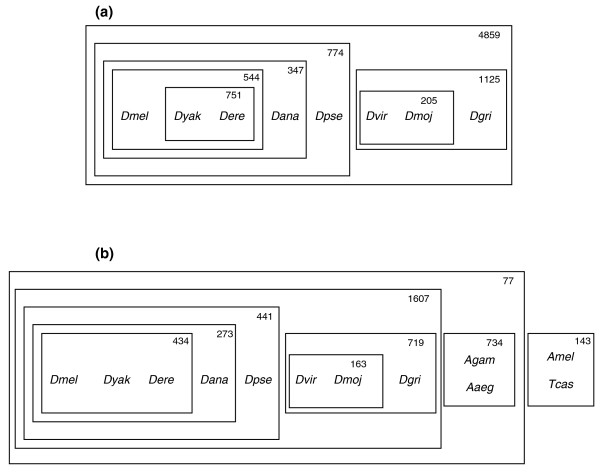Figure 1.
Partitioning of various Drosophila species and outgroup species (Anopheles gambiae (Agam), Aedes aegypti (Aaeg), Apis mellifera (Amel), and Tribolium castaneum (Tcas)) based on 'exclusively shared NGPs' (NGPs found in each species in a clustered group and not found in any species outside this group - see Materials and methods). A box around a pair of species, a cluster and a species, or two clusters, signifies that they are inferred to be grouped together in the phylogeny. Numbers denote the actual number of 'exclusively shared NGPs' unique to each cluster. (a) Arm-indexed clustering within genus Drosophila. Genes with orthologs in all genus Drosophila species (see Materials and methods for species' names) are chosen to form NGPs. This clustering reveals subgenus Drosophila, subgenus Sophophora and melanogaster subgroup species to be distinct clusters. This binary partitioning validates the placement of Dyak (see text) and agrees with the currently understood phylogenetic relationships between other Drosophila species (see Discussion for details). (b) Relaxed clustering without arm indexing for NGPs, in order to include outgroup species that differ in chromosomal architecture (see Materials and methods). The set of common genes between all species, including outgroup species, is used to derive NGPs. Relaxing arm indexing results in loss of signal within the closely related melanogaster subgroup species (Dmel, Dyak, Dere) where Dmel + Dere, Dyak + Dere, and Dmel + Dyak are weak clusters with 16, 15, and 9 exclusively shared NGPs, respectively. See Discussion and Materials and methods for details.

